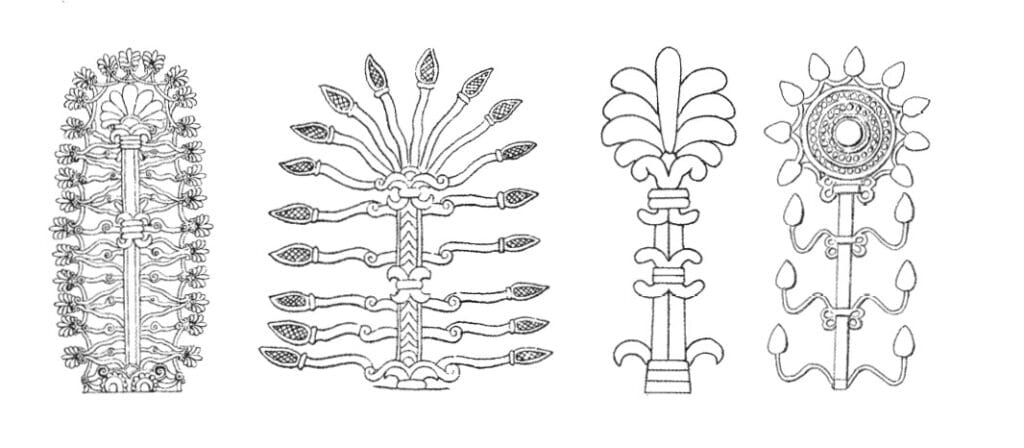Asherah in Ancient Context:
Asherah is a term that appears in the context of ancient Near Eastern religions and is associated with various forms of worship and iconography. The term itself has been linked to a variety of interpretations and physical representations, including wooden cultic posts, cult rooms, and even goddesses.

Etymological Background:
Philologist Heinrich Zimmern proposed that there is an etymological connection between the Hebrew word “asherah” and the Akkadian “asirtu” Both terms are believed to denote a wooden cultic post, a cult room or cella in a temple, or even a private home’s cult room. This multifaceted interpretation indicates that the asherah was not merely a physical object but also represented sacred spaces and possibly deities themselves
Biblical References:
In the Old Testament, asherah is often translated as “grove” or “groves,” implying a connection with tree worship. However, scholars argue that these references do not necessarily indicate a group of trees but rather a specific cult object, potentially akin to the Assyrian Sacred Tree (AST). This object is frequently mentioned in contexts that suggest idol worship and was subject to various reforms and destructions by Israelite leaders.
Cult Object Theory:
The interpretation of asherah as a cult object has evolved over time. Initially, it was seen as a physical pole or tree symbolizing fertility and linked to nature revival rituals. However, Birger Pering and others expanded this view to include the concept of asherah as both a cult pole and a cult place, representing a sacred space that connects heaven and earth. This interpretation aligns with the idea of the AST being a constructed symbol rather than a living tree, emphasizing its role as a divine connector and focal point in religious practices.
Iconographic Representations:
The AST, often associated with the asherah, has been depicted in various forms, such as carved wooden poles, metal objects, or constructed symbols adorned with bands and greenery. These representations were not limited to actual trees but were also symbolic constructs used in religious ceremonies. The decorated poles and objects found in archaeological sites provide evidence of their widespread use and significance in ancient Near Eastern religions.
Cultural and Religious Significance:
Asherah and the AST held significant religious and cultural roles, symbolizing fertility, divine presence, and the connection between the earthly and the divine. They were central to worship practices and were often targeted in religious reforms aimed at centralizing worship and eliminating idolatrous practices. The continued interest in these symbols highlights their importance in understanding the religious landscape of the ancient Near East.
In summary, Asherah represents a complex and multifaceted symbol in ancient Near Eastern religions, encompassing physical cult objects, sacred spaces, and divine representations. Its interpretations have evolved over time, reflecting the dynamic nature of religious practices and iconography in the ancient world.
